Tailor-mad for it: how suits are shaking up menswear

Sexy or 9-5-appropriate? Cool or oh-so-smart? Who cares, there are styles for all. And designers from Prada to Martine Rose to Luke Derrick are all for it.
Style
Words: Alex Fleming-Brown
Suits are back, boys. They’ve been cruising down the runways, traipsing the streets of Soho, adopted by The Dare and trailing around car boots. Young men are formally stepping into the year.
Let’s think of it as the natural style successor to last year’s “blokecore” trend. In all its loutish, laid-back nostalgia, the sartorial appeal of adidas Sambas, baggy jeans and vintage football shirts indulged in the never-ending ’90s revival spiral – a yearning for a masculine aesthetic rooted in sweet, sweet hedonism.
But the suit is indulging in nostalgia, too, albeit a type that is more antiquated. For the wave of designers who began turning their backs on gaudy logos over the last year, the slow, er, succession of “quiet luxury” and the hypebeast “growing up”, clean-cut lines and the smart structure of a suit seems like the obvious progression into the new year.
“It’s an incredibly powerful tool,” says tailor-mad menswear designer Luke Derrick, ahead of his debut runway show at London Fashion Week. “Wearing tailoring projects an image of having your shit together, regardless of whether or not you do, in fact, have your shit together.”
January’s menswear shows were noticeably lacking hoodies, trainers and even techy outerwear. In its place were suits – and lots of them: in classic black, dusty pink, worn with tailored skirts, made in tweed, denim, fluffy teddy material and leather. This season, the suit reached experimental highs.
“It’s hard to beat the clothes that make you feel self-assured and less hungover”
A SUITED 24-YEAR-OLD SHOPPER
Kicking things off was Sabato De Sarno’s second collection for Gucci. The creative director veered back to the Italian house’s classic credentials with clean, restrained suiting, the occasional flash of skin and subverted formalwear in loose, long ties, oversized white shirts and leather gloves. Opening the show was a dark grey overcoat structured in the style of a blazer. And closing, a near-identical version in black. Here, the suit wasn’t so out of the ordinary. But sexy? Oh, yes.
For all of Gucci’s sex appeal, Fendi opted for tradition, saluting heritage and blue-blooded pedigree with Princess Anne as the house’s unlikely pin-up for its latest men’s collection. There were frugal English tailoring staples in steely greys and tweed, freeing over-the-knee skirts and matching jackets worn with fisherman hats, weatherproof boots and waxed jackets. And over at Loewe, the suit borrowed from early-’90s grunge with a loosely cut pinstripe number complete with the model’s shoulder-length blood-red hair.
Since the 1960s – when it started undergoing a casual, more relaxed transformation at the hands of the mods, who helped popularise bold patterns and the skinny fit – the suit has undergone many an iteration. Flares of the ’70s, power shoulders of the ’80s, worn with Adidas Gazelles and a slogan T‑shirt in the ’90s and, at the turn of the millennium, Hedi Slimane’s indelible influence on young men with the razor-sharp skinny suit, soon the indie uniform complete with trilbies, silver chains and optional rollies were duplicated up and down Camden Town.
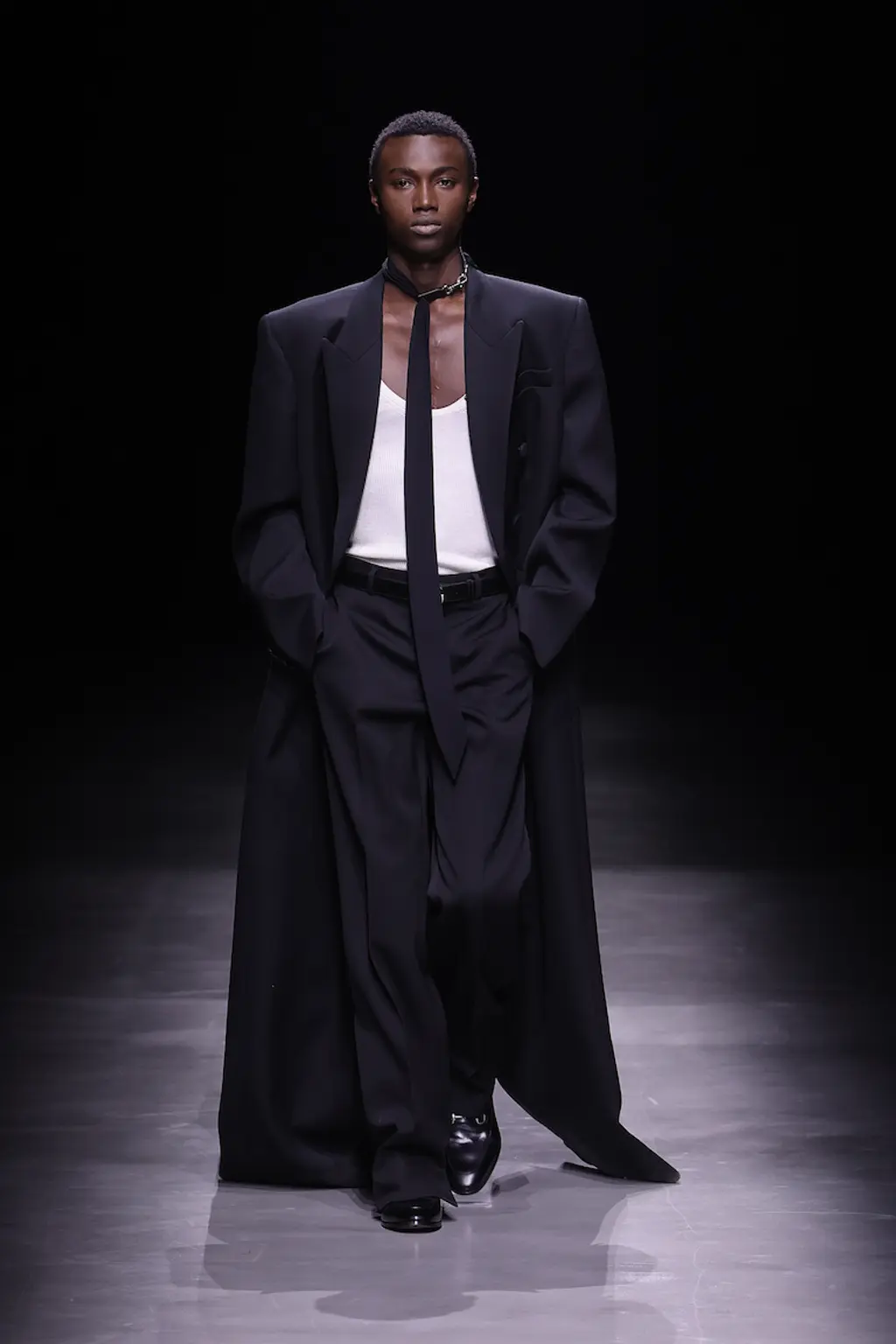
Gucci
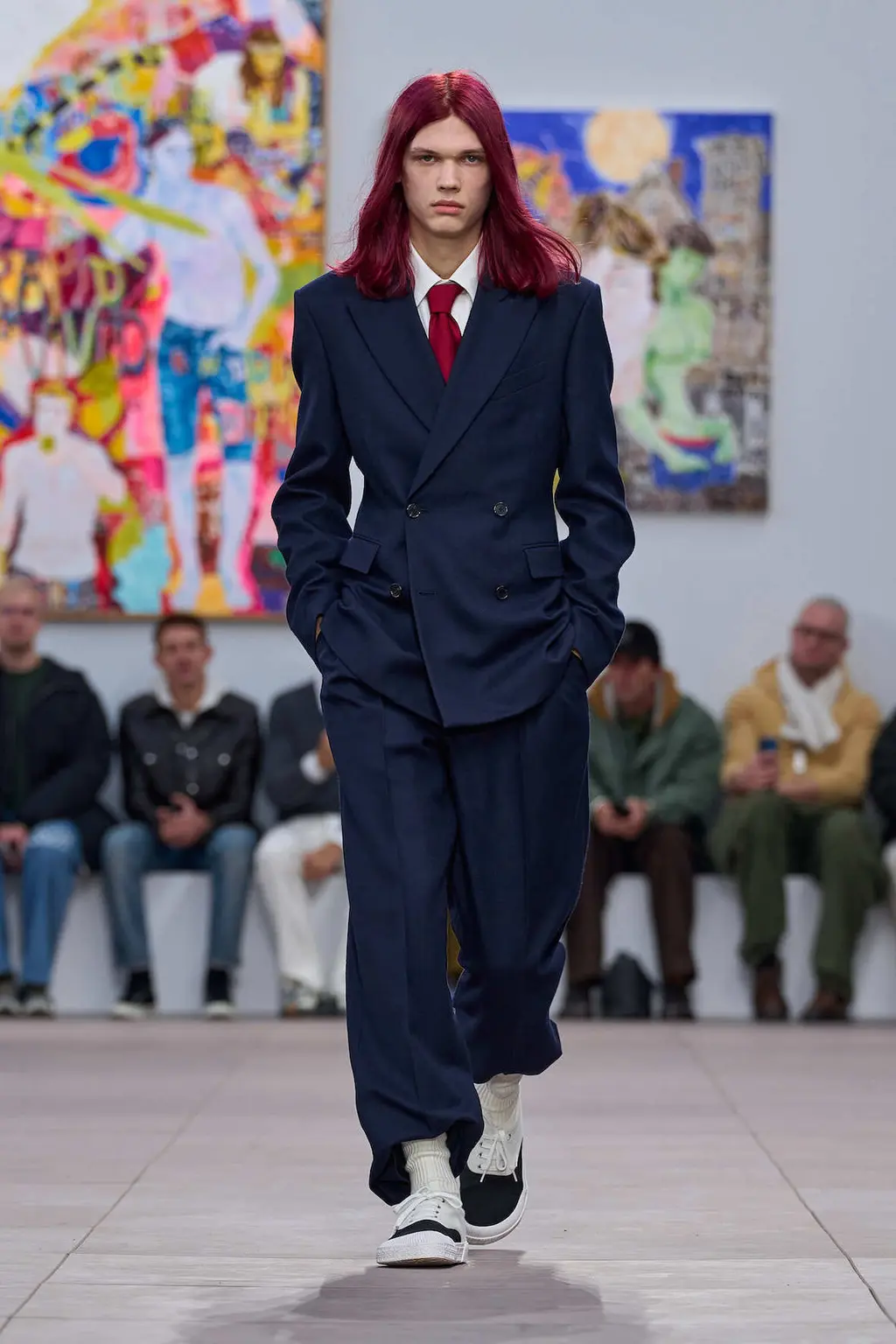
Loewe
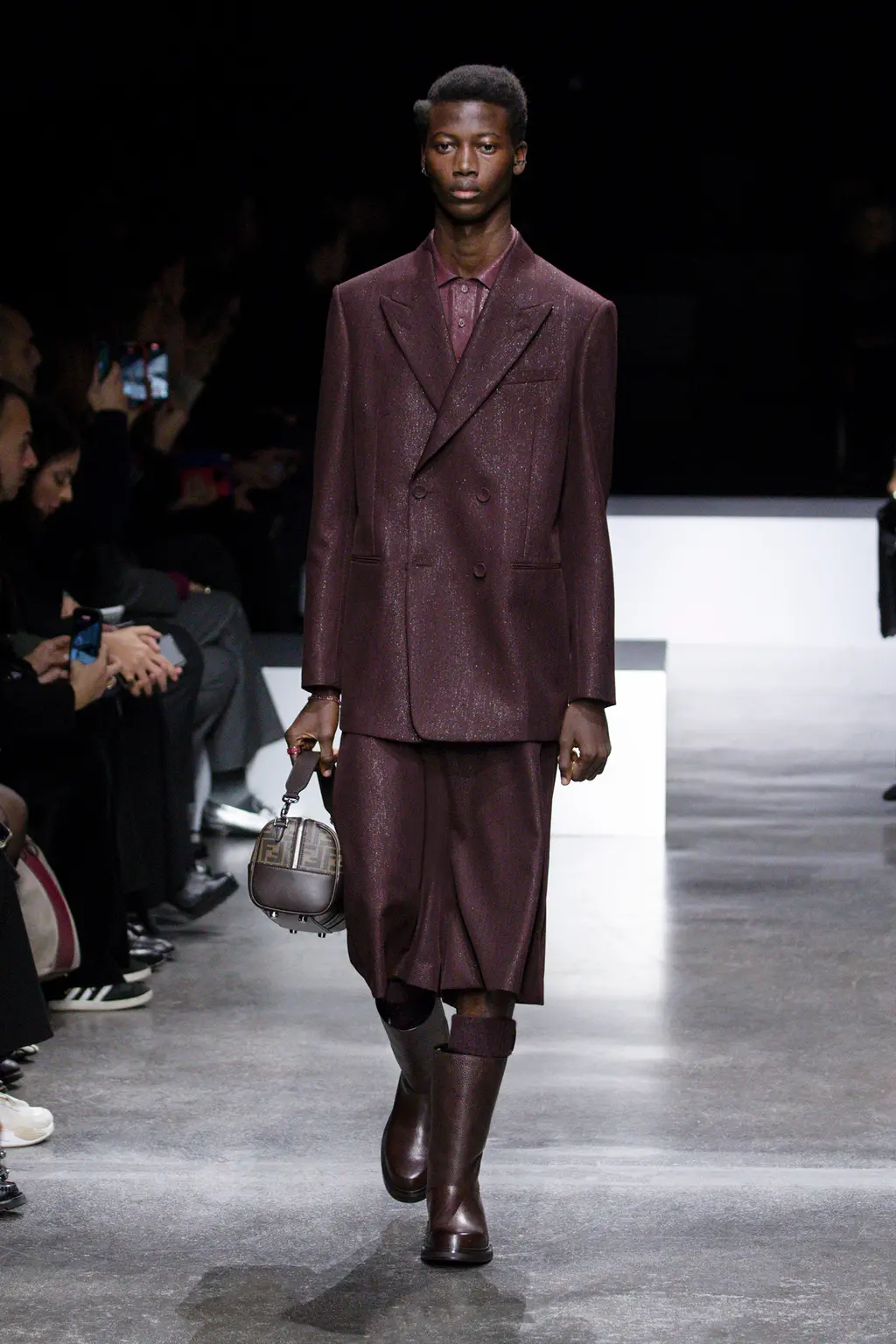
Fendi
By the 2010s, the proverbial rule book had been ripped up, torn in half and chucked in the incinerator. Versace presented a kinky leather suit influenced by BDSM in 2012, with metal buckles along the side of the trousers. A year later, Givenchy tore off the sleeves of a pastel pink blazer. Then, in 2015, Dior Homme’s then-creative director Kris Van Assche (who once told THE FACE, “The more there are rules, the more it’s fun to push them a little further”) subverted the traditional black-tie suit by sending an army of men down the runway with badges stuck to lapels, caps on heads and leather hoodies in place of a blazer.

Martine Rose AW24
In 2016, Balenciaga pushed a new, austere agenda under newly-appointed creative director Demna. Influenced by awkward post-Soviet youth styles – elongated shoes, XXL puffer jackets, granny florals – the suit harked back to the rigidity of 1980s Britain: excessive power shoulders, ill-fitting boxy blazers and briefcases clasped to hands. Martine Rose, a cerebral innovator, was the creative consultant for Demna’s first few Balenciaga collections. When Rose shut down a Tottenham market for her runway show in 2017, she set the tone for her rollicking take on the suit and the extremes to which one could take it. Influenced by the everyday bankers, bus drivers and office workers as much as punks, New Romantics and Buffalo style, the suit became a canvas of interpretation. In Rose’s hands, silhouettes became extreme, colours popped and clashed, awkward yet irreverent.
In 282 Portobello, a vintage shop in Notting Hill, rails are crammed full of vintage suits, with young fans popping in and out over the weekend. “These clothes are full of history and richness and love,” one 20-year-old shopper says, sifting his way through a rail of casual suits from the ’70s and ’80s – black, navy, charcoal, pinstripe styles with the distinct, musky smell of the past. “They are simply different.”
For other young men, it’s all in the attitude. “It’s hard to beat the clothes that make you feel self-assured and less hungover”, a suited 24-year-old says on the tube, wearing his two-piece with a T‑shirt and a pair of beaten-up Converse.
There is also a cohort of young designers paying attention to tailoring heritage. Max Foucaut, who interned in a Savile Row tailors for two years in between his BA Menswear degree at Central Saint Martins, reimagines the suit through his French heritage – the smoky refinement of Parisian style and its surrounding architecture and France’s rustic countryside. And growing up in California, he was influenced by the slow beaches inhabited by salty-haired sunbathers and laid-back surfers. Foucaut’s BA collection, then, was like a patchwork, using natural hand dyeing techniques and pad stitch smocking. “I like to expose tailoring stitches to show the most intricate processes of tailoring while maintaining its original purpose to playfully subvert traditions,” he says.
Further west of Savile Row is George Marsh, an Italian-trained tailor who puts the artisanal spirit of the tailors at the centre of the clothes he creates at his boutique Speciale. Unlike several Saville Row operations, every bespoke piece is cut, made, finished and pressed on his shop floor, off Portobello Road. Its popularity seems to defy expectations about who still wants suits. “We’re lucky we have a younger clientele,” he says. His patrons can look into the shop and see their clothing gradually taking form over months. “With handwork, you can manipulate the cloth and give it more durability, so you need less structuring,” he says, explaining how some of the shapes in his suits are simply irreproducible with modern machines and mass production methods.
With that said, most young people aren’t dropping £5,000 on a bespoke piece, but then again, they don’t need to. Vintage shops across the capital give dandies access to a load of traditional tailoring. Cenci, tucked away in West Norwood, south London, is the unofficial mecca for second-hand aficionados – or anyone feeling disillusioned by the build standards of modern clothing. Here, you’ll find original pieces from the 1930s to 1970s.
“They don’t make quality today, you have to cut quality to make a profit,” notes Massimo, one-half of the husband-wife duo who run Cenci. Opening the business in Florence in 1971, they moved their store to Covent Garden in 1985 and eventually to south London, where their hangar of hangers can now be found. Sharp elbow to sharp elbow, combing the rails of vintage finery are top-notch stylists, art school students and emerging designers on the hunt for a weekend fit, or a little inspiration.
And sometimes, the most celebrated names in fashion come hunting for treasure. “In October, Galliano came twice from Paris,” says Massimo, proudly. “And a month ago we had a visit [from] Dior.” There are similar reports in other boutiques, often energetically proven with photographic evidence. Fashion houses make regular pilgrimages to these shops on the hunt for relics of artisanal skills, from which they can replicate either details or the whole garment. “They bought this just to copy the hand stitching,” Massimo sighs, showing me a 1950s piece he’s recently upcycled.
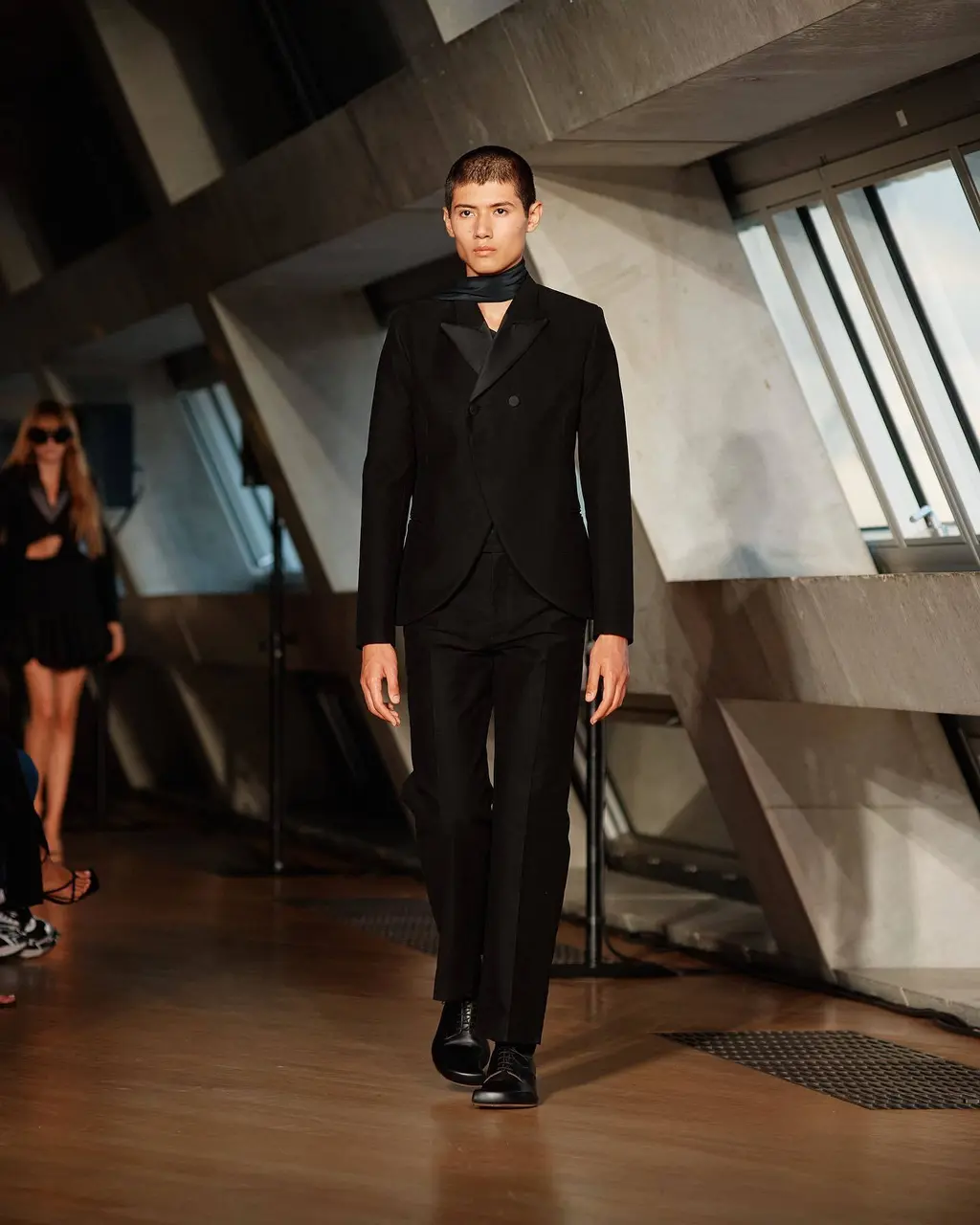
Aaron Esh
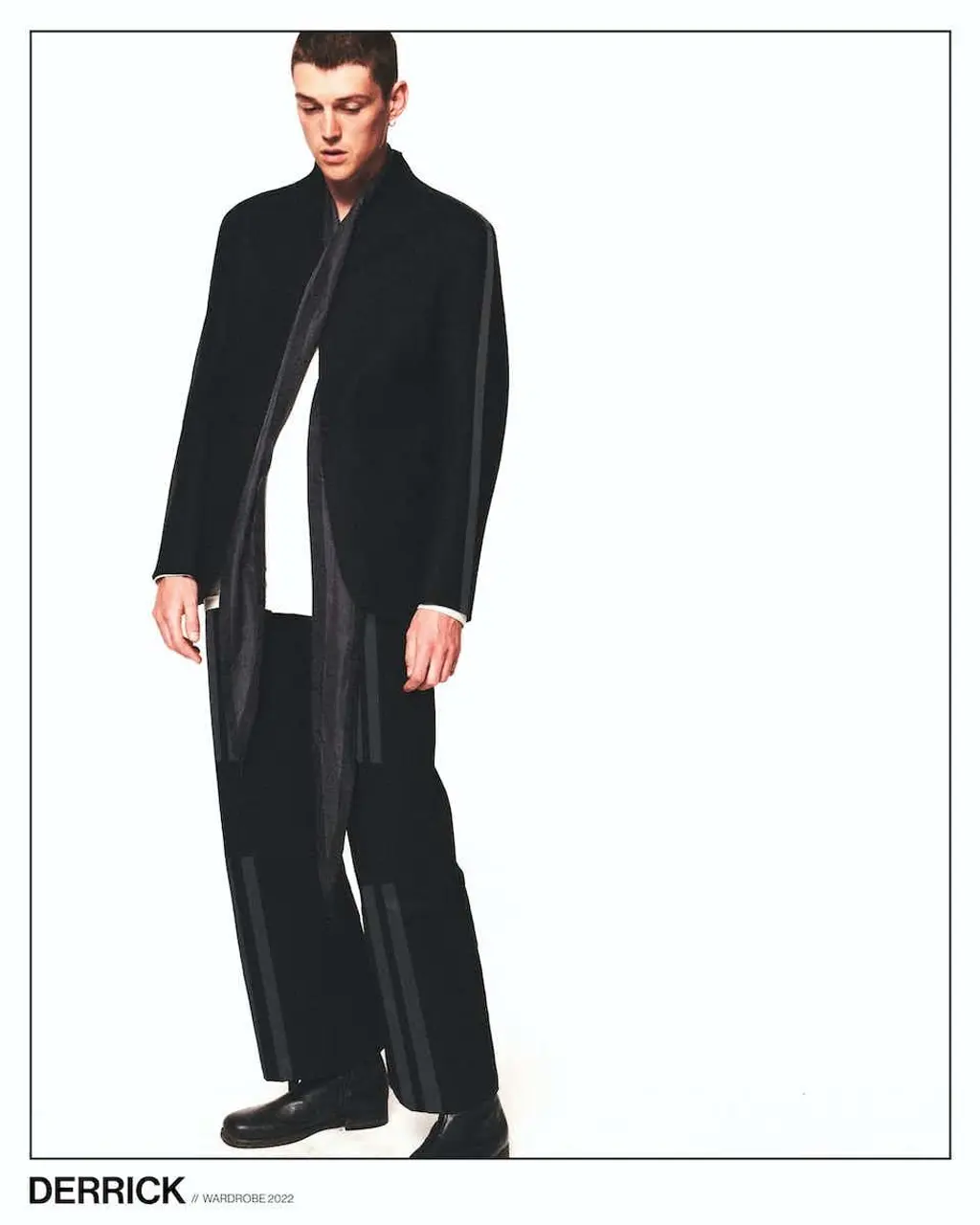
Luke Derrick
While big dogs such as Prada, Gucci and Valentino lead the pack during Men’s Fashion Week, there are two emerging British designers flying the flag. Aaron Esh’s debut runway show in September 2023 took the chaotic, fleeting moments of living in London – hangovers, bad dates, delayed trains, unpredictable weather – and turned it into a superbly romantic collection that featured slick black tailoring, twisted lapels and silky cocoon-like overcoats.
Meanwhile, Luke Derrick’s eponymous brand combines smart-casual with a couch-to-club ethos, finding an enduring appeal in male archetypes and the function-first approach of simple, smart jackets and tailored trousers, undercut with an almost athletic finesse.
“Mentally, I think we still have one foot in our lockdown office bedrooms of 2020 in which we re-discovered the importance of comfort and ease as the fundamentally most important experiential aspect of our dressing,” Derrick says.
“We’re very much outdoors now, but that ease is still burnt into our zeitgeist. That’s the great thing about tailored silhouettes – it’s really low-effort, pragmatic dressing. No matter what you might be wearing beneath, if you throw on an overcoat on top that’s all you need to pass as ‘smart’.”






